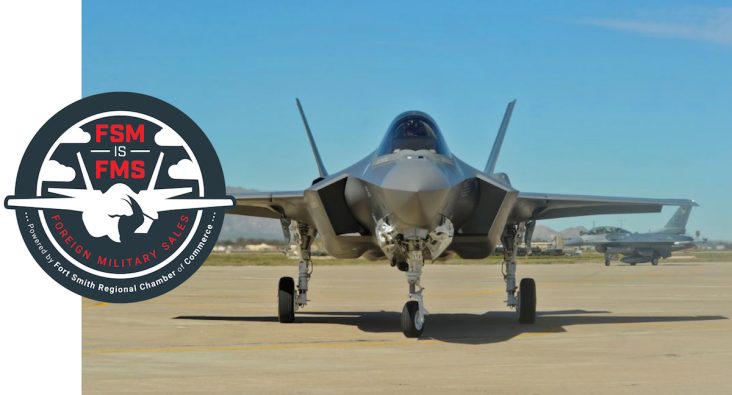‘Arresting system’ work begins at Fort Smith Regional Airport
by December 1, 2023 11:14 am 2,158 views

Having just completed a $17 million runway extension, Fort Smith Regional Airport officials are now working on adding an almost $18 million “arresting system” on the main runway. Both projects are to prep for the military’s foreign pilot training center at the airport.
Work is also set to begin in early 2024 on expansion of a fire station at the airport to accommodate the new training center.
Ebbing Air National Guard Base, home to the 188th Wing in Fort Smith and co-located with the Fort Smith Regional Airport, was selected in March by the U.S. Air Force to be the long-term pilot training center supporting F-16 and F-35 fighter planes purchased by Singapore, Switzerland, Poland, Germany, Finland and other countries participating in the Foreign Military Sales (FMS) program. Initial estimates are that 1,500 military personnel and family members will be associated with the new center once it is fully operational.
U.S. Air Force officials have said the earliest planes and pilots from foreign nations could arrive at Ebbing would be in late 2024, part of the military’s fiscal year 2025 beginning in September 2024. The full complement of 12 F-16s and 24 F-35s from various nations could arrive in fiscal year 2026 at the earliest. It has been estimated that the full cost to create an operational foreign pilot training center will range between $700 million and $800 million.
The BAK 12/14 Arresting System, as it’s known by the U.S. Air Force, will be placed on both ends of the airport’s main (Runway 8-26) runway, with the first system installed on the west end, said Airport Director Michael Griffin.
“The BAK-14 retractable hook-cable support system was designed for use with aircraft arresting systems on Air Force Civil joint-use airfields. In the raised position, the BAK-14 supports the aircraft arresting-hook cable above the runway surface for engagement of arresting-hook-equipped aircraft in the lowered position, the runway surface is clear and the BAK-14 offers no interference to the operation of lightweight civil aircraft,” according to the U.S. Defense Technical Information Center.
The arresting cable is engaged by Federal Aviation Administration employees in the airport tower for any military aircraft equipped with a tailhook that experiences a problem and needs to be stopped before it runs off the runway.
Griffin said the cost to install the system is just under $18 million and is being paid by the U.S. Air Force. Project design is led by the Fort Smith office of Halff and Associates, with Fort Smith-based Beshears Construction the construction management firm. Fort Smith-based Forsgren and Hughes Electric, both based in Fort Smith, and Van Buren-based Custom Pavement Maintenance and Safety are also involved in the project.
Griffin said the runway extension – also needed for the FMS program – allows the arresting gear work without having to close the runway to civil aviation use. There may be temporary closures, but nothing long-term.
“Before (the extension), we would barely have enough runway length to keep the runway open, but now we have more room for the planes to land,” he said.
Airport and Air Force National Guard officials are also in the “late design stage” for a fire station expansion, Griffin said. He said the initial cost estimate for the expansion is between $3.5 million and $4 million. Griffin said the goal is to begin work in early 2024 and have the expansion finished before the end of 2024.
Griffin also praised the work of Airport Director of Operations Tiffany Farmer for her focus on keeping construction projects on track. Farmer has worked at the airport for just under two years, and came from Love Field in Dallas where “they were always doing construction,” Griffin said.
“She has been a great benefit during all of this (FMS) work. She’s doing a great job representing the airport as our construction manager,” Griffin said.
